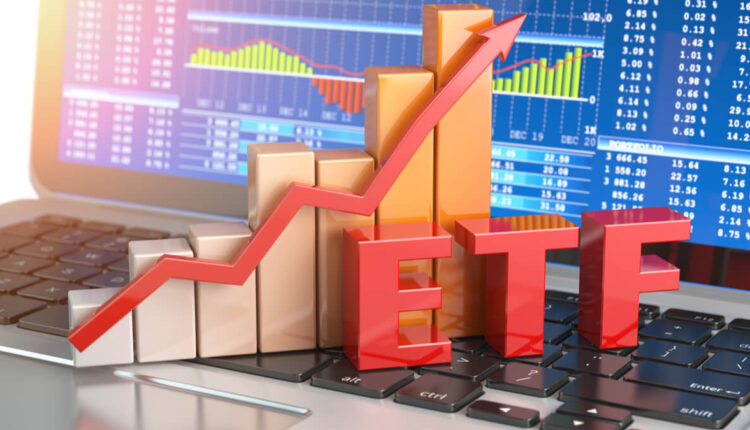When planning for retirement, many investors focus on maximizing returns, minimizing risk, and ensuring they have enough saved to support their lifestyle. However, one critical factor that often gets overlooked is tax efficiency. One of the most powerful ways to enhance the tax efficiency of your retirement portfolio is by using high-dividend international ETFs strategically. These investments can provide a strong income stream and global diversification, but they can also come with significant tax implications if not handled correctly.
In this guide, we’ll explore how to optimize your retirement accounts with high-dividend international ETFs, ensuring you maximize both your income and tax efficiency.
Why High-Dividend International ETFs?
High-dividend international ETFs invest in a basket of global stocks that pay above-average dividends. These funds offer several advantages:
- Income Generation: They provide a steady stream of income, which is particularly valuable for retirees or those nearing retirement.
- Global Diversification: Investing internationally allows you to diversify your portfolio across different economies and markets, reducing the risk associated with any single country or region.
- Potential for Higher Yields: International markets, especially emerging markets, often offer higher dividend yields than U.S. markets, providing an attractive income source.
However, with these benefits come certain tax considerations that are crucial to address.
The Tax Challenge with High-Dividend International ETFs
One of the biggest challenges with high-dividend international ETFs is their tax treatment. Unlike U.S. dividends, which may qualify for a lower tax rate, many foreign dividends are considered non-qualified and are taxed at your ordinary income tax rate. Additionally, many countries impose withholding taxes on dividends paid to foreign investors, which can further reduce your income.
Non-Qualified Dividends
- Ordinary Income Taxation: Non-qualified dividends from foreign companies are taxed at your ordinary income tax rate, which can be as high as 37% for top earners. This is significantly higher than the 0-20% range typically applied to qualified dividends.
- Tax Inefficiency in Taxable Accounts: If you hold high-dividend international ETFs in a taxable account, the combination of non-qualified dividend taxation and foreign withholding taxes can severely erode your returns.
Optimizing Your Retirement Accounts with High-Dividend International ETFs
To mitigate these tax issues and maximize your returns, it’s essential to place high-dividend international ETFs in the right retirement accounts. Here’s how:
1. Use Tax-Deferred Accounts for Non-Qualified Dividends
Tax-deferred accounts like Traditional IRAs and 401(k)s are ideal for holding high-dividend international ETFs. Here’s why:
- Deferral of Taxes: In a Traditional IRA or 401(k), you don’t pay taxes on the dividends or capital gains until you withdraw the funds in retirement. This deferral allows your investments to grow without the drag of annual taxes.
- Lower Tax Rate at Withdrawal: When you eventually withdraw the money in retirement, it’s taxed as ordinary income. However, retirees often find themselves in a lower tax bracket, reducing the overall tax impact.
- Mitigating Withholding Taxes: While you can’t avoid foreign withholding taxes altogether, placing high-dividend international ETFs in a tax-deferred account allows the rest of your dividends to compound without further taxation.
2. Roth IRA: Shelter High Growth and High Dividend Investments
A Roth IRA is another excellent option for high-dividend international ETFs, especially those with strong growth potential. Here’s how to take advantage:
- Tax-Free Growth: In a Roth IRA, your investments grow tax-free, and qualified withdrawals are also tax-free. This means that the high dividends and potential capital gains from international ETFs won’t be taxed, maximizing your returns.
- No RMDs: Unlike Traditional IRAs, Roth IRAs do not require you to take minimum distributions starting at age 73. This allows your investments, including high-dividend international ETFs, to continue growing tax-free for as long as you like.
- Ideal for Long-Term Growth: If you’re investing in international markets with strong growth prospects, a Roth IRA allows you to capture those gains without worrying about the tax implications.
3. Strategic Allocation Based on Tax Treatment
When deciding where to place high-dividend international ETFs within your retirement accounts, consider the following strategy:
- Traditional IRA/401(k): Place international ETFs with the highest dividends and less growth potential here. The tax deferral will benefit income-generating assets, especially if the dividends are non-qualified.
- Roth IRA: Allocate international ETFs with both high dividends and strong growth potential to your Roth IRA. This ensures that both the income and growth are sheltered from taxes.
- Taxable Account: Reserve your taxable account for more tax-efficient investments, such as U.S. index funds or tax-managed funds. Avoid placing high-dividend international ETFs here unless you have no other options.
Top High-Dividend International ETFs for Your Retirement Accounts
To help you get started, here are some high-dividend international ETFs that are well-suited for tax-advantaged retirement accounts:
- iShares MSCI Brazil ETF (EWZ)
- Yield: Around 7-8%
- Why It’s a Fit: Brazil’s economy is known for high-dividend-paying sectors like energy and financials. Holding EWZ in a Traditional IRA can help defer taxes on these substantial dividends.
- iShares MSCI Turkey ETF (TUR)
- Yield: Around 3-5%
- Why It’s a Fit: Turkey offers high yields from sectors such as banking and industrials. This ETF is better suited for a Traditional IRA or 401(k) due to its tax inefficiency.
- iShares MSCI South Africa ETF (EZA)
- Yield: Around 3-5%
- Why It’s a Fit: South Africa provides strong dividends, particularly from its mining and financial sectors. EZA is ideal for tax-deferred accounts to shelter these dividends from immediate taxation.
- Global X MSCI SuperDividend Emerging Markets ETF (SDEM)
- Yield: Around 6-8%
- Why It’s a Fit: This ETF focuses on high-dividend-paying companies in emerging markets, offering a diversified income stream. It’s a good choice for a Roth IRA to capture both income and growth tax-free.
- Vanguard FTSE All-World ex-US High Dividend Yield ETF (VEU)
- Yield: Around 3-4%
- Why It’s a Fit: This ETF provides broad exposure to high-dividend stocks across developed and emerging markets. It’s versatile enough for both Roth and Traditional IRAs.
Conclusion: Enhance Your Retirement Portfolio with Tax-Efficient High-Dividend International ETFs
High-dividend international ETFs offer a compelling way to generate income and diversify your retirement portfolio globally. However, without careful planning, the tax implications of these investments can erode your returns. By strategically placing these ETFs in the right retirement accounts—Traditional IRA, Roth IRA, or 401(k)—you can optimize your tax efficiency, maximize your income, and grow your wealth more effectively.
As you build and refine your retirement strategy, remember that tax efficiency is just as important as asset allocation. By understanding how to optimize your retirement accounts with high-dividend international ETFs, you can ensure that more of your investment income stays in your pocket, compounding over time and helping you achieve a secure and comfortable retirement.




